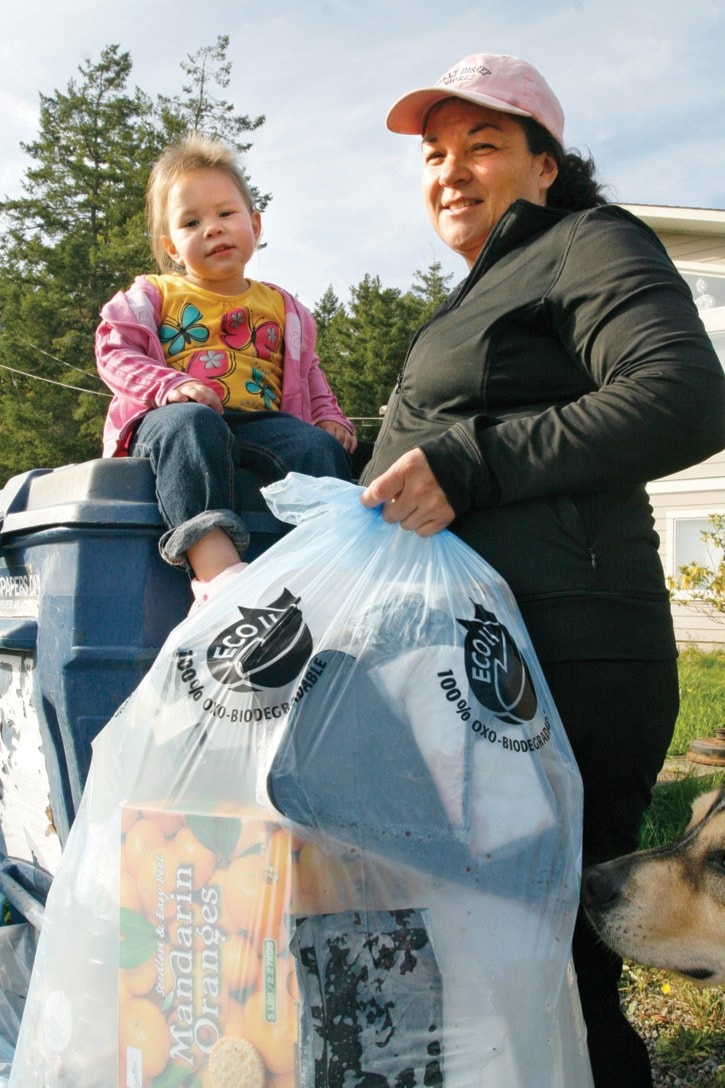They are not spinning straw into gold, but Beecher Bay First Nation wants to turn trash into gas.
The band is looking to partner with Sequel Integrated Resource Mangement to build a small contained plant that would steam household waste into a gas similar to natural gas. The gas could be used to generate electricity or be converted to fuel.
“This variation doesn’t burn the waste, it steams the waste,” said Chris Corps of Sequel IRM, at a presentation to Metchosin council. “It happens in a completely sealed chamber.”
“This will put Beecher Bay on the map,” added Beecher Bay Chief Russell Chipps.
Chipps said the project is vital to create jobs for Beecher Bay people, and jobs that are close to home. “As far as I can tell there are more jobs than we have people,” he said.
“Any kind of economic development would be beneficial to our community,” remarked Sharon Cooper, a lifelong Beecher Bay resident. “When people start making their own money instead of having it given to them, it builds their self esteem and self confidence. Once that happens in a community, everything gets better.”
Sequel IRM selected Beecher Bay due to its proximity to Department of National Defence land.
“(DND) is once of the largest single energy consumers,” Corps said. “The gas can be converted to electrical energy.”
The proposed high-pressure facility for Beecher Bay would process about 30 tonnes of household waste each day, about the equivalent to one garbage truck.
It could be built on less than an acre of land and would act as a demonstration project for the company. Corps said there should be no odour coming from the plant.
At the presentation at Metcosin council, Corps and Chipps asked the district to donate its garbage to the project. Once the garbage is at the plant, it would be sorted separating items that could be recycled and those that will be vaporized.
He stressed to council he wasn’t asking the District for any financial contributions.
“It will enhance recycling. You don’t (steam) anything that can be recycled,” Corps said. “This will reduce truck (greenhouse gases) by not going to Hartland.”
The steaming process involves using a small amount of water mixed with solid waste.
“We hope not to inject potable water, we could use sea water but would prefer to enhance it using septic water,” Corps said, explaining the plant could run completely on liquid waste, including septic waste.
“It is essential that this project be looked at as a substitute for (a regional sewage facility),” noted Metchosin Mayor John Ranns.
Gas produced from this process can be used for anything people use natural gas for, such as cooking and fireplaces, Corps said. The gas could be converted into electricity.
The plant would also be capable of making other fuel sources such as kerosene and diesel.
There is waste left over once the process is finished, and which could be used as road base or for ash in a concrete mixture, Corps said.
Corps explained Metchosin’s role in the project would be to contribute garbage and to support the application for government funding.
If the project is given the go ahead, Corps said the plant could be built in about three months, but it could take up to a year before it is approved.
Royal Roads University and Simon Fraser University are also supporting the project and grant proposal to Natural Resources Canada.
“This would be excellent for real life experience for our students,” said Nancy Wilkin, director of RRUs office of sustainability.
reporter@goldstreamgazette.com
The District of Metchosin approved the project in principal so the band could carry on with the application.
The project has passed through the preliminary application process with Natural Resources Canada.
reporter@goldstreamgazette.com
